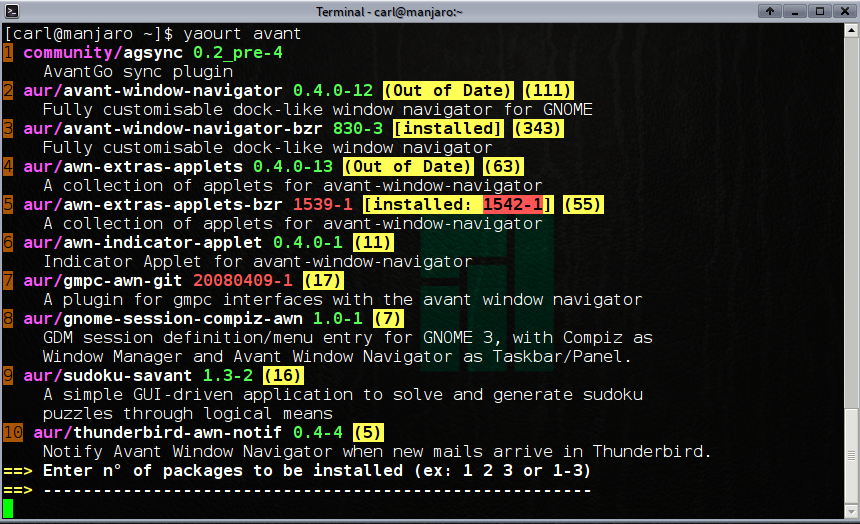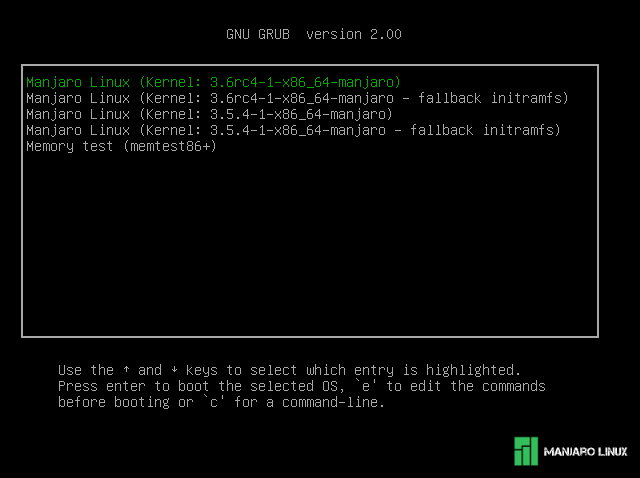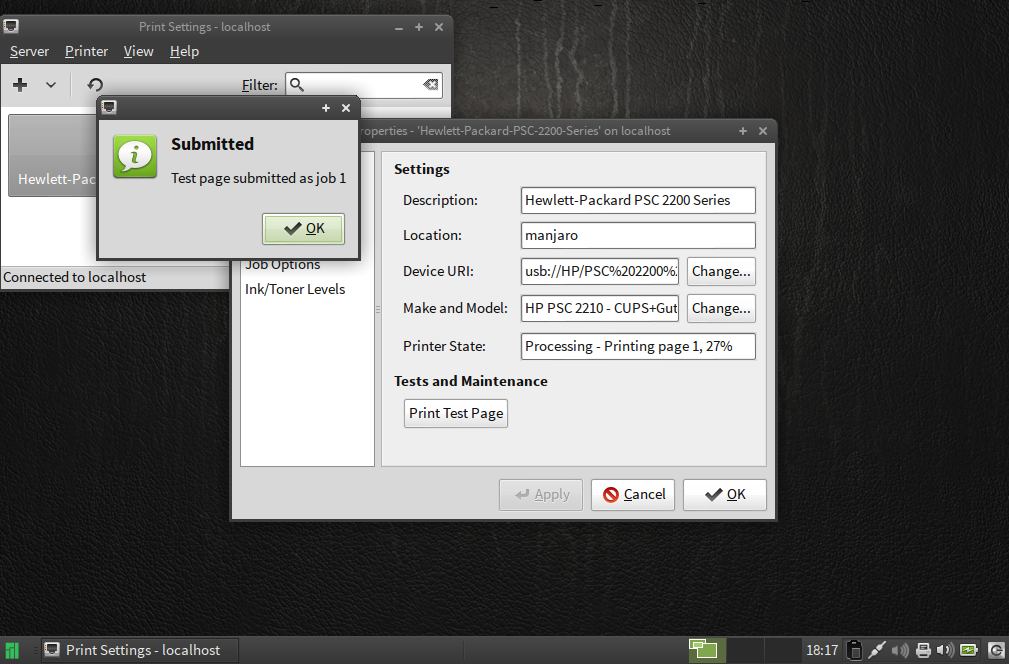Using Manjaro for Beginners
Views
Actions
Namespaces
Variants
Tools
Welcome to Manjaro!
This guide provides a brief overview of the key points it is necessary to know in order to get the most out of using the Manjaro operating system.
Updating the System
Developed exclusively by the Manjaro Team, the Pamac Updater will automatically check and notify you of any available system updates when launched. This can be found in the System menu category, or in Openbox, via Synapse or the desktop menu.
To install updates when listed, simply click the Apply button.
Software Management
The Pamac Manager is a very simple yet powerful tool to add and remove software packages (e.g. applications) from your system. This can be found in the System menu category, or in Openbox, via Synapse or the desktop menu.
Upon launching, it will automatically check the official Manjaro Repositories for new and updated software. Once complete, simply enter the name or short description of what you want to install or remove, and click the Find button.
All installed and available software matching your search will then be displayed on the right. Click the name of any result to see more information about it immediately below.
A checkbox next to the package name will indicate whether it is installed or not.
- To install a package, click the adjacent box to mark it.
- To remove an installed package, click the adjacent box to clear it.
Once package boxes have been marked and/or cleared, you may undertake more searches before clicking the Apply button to conform your choice(s). It really is that simple!
Particularly when installing new software applications, on occasion several other software packages will also be automatically installed as well. These are known as dependencies, as they are necessary for whatever is being installed to work properly. In other words, the software package being downloaded is dependent upon them.
Pamac will list the dependencies required for software packages in the information pane. For example, as illustrated, if the VLC Media Player were to be installed, then several other software packages - such as to allow it to play different media formats - would also be automatically be downloaded if not already installed on the system. Without them, the Media Player would not be able to play certain media formats, or perhaps not be able to play anything at all!
The Arch User Repository (AUR)
Although Manjaro is 100% Arch compatible - being based on Arch itself - it is not possible access the official repositories of the Arch System to download software. Manjaro instead uses its own official repositories in order to ensure that any software packages provided (e.g. system updates and applications) have been fully tested and are completely stable before release.
However, it is still possible to access additional software packages from the Arch User Repository (AUR), which is managed by the Arch community (i.e. users) themselves. Although this repository is unofficial, software packages first placed here are known to make their way into Arch's official repositories if they become popular enough. A guide on how to Access the AUR has been provided.
Using the Terminal
In simple terms, a terminal (or console) is an interface that allows for text commands to be entered and displayed. As it is an exceptionally powerful and versatile tool to use, Arch and other Arch-based systems are notable for relying far more heavily on their use than other (user-friendly) distributions such as Ubuntu or Mint, which have placed a greater focus on the use of Graphical User Interfaces.
While Graphical User Interfaces to undertake common tasks have been provided with Manjaro - particularly to assist new users - just as with other user-friendly distributions, it may on occasion be necessary to use the terminal to get something done. Most of the guides contained in the wiki rely on using the terminal, particularly where solving problems and tweaking the system is concerned. For those users who wish to learn more about how Manjaro works, and for those who wish to take full advantage of its versatility, it is highly recommended to learn how to use the terminal. Don't worry: it's not that hard or scary, and this wiki can be used to guide you every step of the way.
Setting Your System's Time
Occasionally some users have the need to reset their Manjaro system's time/date. This is quite an easy process involving a few steps at the command line (for those unfamiliar with the command line see the section above this one).
Check your system's time/date settings
The following command:
[handy@jarmano ~]$ timedatectl status
Gives this output on my machine:
[handy@jarmano ~]$ timedatectl status
Local time: Mon 2013-07-08 10:21:32 WST
Universal time: Mon 2013-07-08 00:21:32 UTC
RTC time: Mon 2013-07-08 00:21:32
Timezone: Australia/Perth (WST, +800)
NTP enabled: no
NTP synchronized: no
RTC in local TZ: no
DST active: no
Last DST change: DST ended at
Sun 2013-04-07 02:59:59 WST
Sun 2013-04-07 02:00:00 WST
Next DST change: DST begins (the clock jumps one hour forward) at
Sun 2013-10-06 01:59:59 WST
Sun 2013-10-06 03:00:00 WST
The above output has the wrong Timezone, & NTP not enabled. If the output on your machine does NOT have the correct Timezone: &/or has NTP enabled: no then continue & we'll fix those problems up.
Turn on the Network Time Protocol (NTP) [1]
First off we had better be sure that even though the ntp package is installed by default on the Manjaro system, it is actually there, if it is already there this will do no harm:
[handy@jarmano ~]$ sudo pacman -S ntp
Now we can turn on ntp on by using the following command in the Terminal (sudo requires the root password):
[handy@jarmano ~]$ sudo timedatectl set-ntp true
List Supported Timezones (locales)
The following command lists the supported timezones:
[handy@jarmano ~]$ timedatectl list-timezones
Scroll through this list (use the space bar to move to the next page) to find yours, then use your mouse to highlight it & then copy it using the Terminal's menu or the keyboard shortcuts (Ctrl, Shift & C). Typing q at any time will return you to the Terminal prompt.
Set the Correct Timezone
Now that you have your timezone copied to the clipboard, we need to tell the system to use it. We do that with the following command (requires root password), this example uses my timezone of Australia/Sydney:
[handy@jarmano ~]$ sudo timedatectl set-timezone Australia/Sydney
Verify that your Timezone (time & date) & NTP are working
To verify that your input has worked enter the following command:
[handy@jarmano ~]$ timedatectl status
Local time: Mon 2013-07-08 10:21:32 EST
Universal time: Mon 2013-07-08 00:21:32 UTC
RTC time: Mon 2013-07-08 00:21:32
Timezone: Australia/Sydney (EST, +1000)
NTP enabled: yes
NTP synchronized: yes
RTC in local TZ: no
DST active: no
Last DST change: DST ended at
Sun 2013-04-07 02:59:59 EST
Sun 2013-04-07 02:00:00 EST
Next DST change: DST begins (the clock jumps one hour forward) at
Sun 2013-10-06 01:59:59 EST
Sun 2013-10-06 03:00:00 EST
You should now see the Timezone: <Country/City> with your previously entered Country/City, NTP enabled: yes should be showing & most importantly your time & date should be correct.
Set the System Time
For those that have a need to set the system's clock directly, use the following command:
[handy@jarmano ~]$ sudo timedatectl set-time "2013-08-11 23:56:16"
Using the Timeset Script
The Timeset Script can be used to configure most of the system time/date settings from a single place.
Its usage is mostly self explainatory.
How to get it-
It can be downloaded from here
After downloading will need to make it executable.
sudo chmod +x ~/timeset
After then copy it to the /usr/bin directory for easy access
sudo cp ~/timeset /usr/bin
(Assuming that it has been downloaded to the home folder)
Otherwise it should be sudo chmod +x <path-to-timeset> and sudo cp <path-to-timeset> /usr/bin
To run the script-
sudo timeset
For more information on this page, including how to make a desktop shortcut for it, see this forum link. [2]
If you still have problems please post in this Manjaro forum thread: [3]
Using Multiple Kernels
A Linux kernel is the core of a Linux operating system, which acts as an interface between your computer's hardware and the applications that run on it. Manjaro not only supports the use of multiple kernels (selectable from the boot screen), but allows easy access to the very latest bleeding edge kernels as well. All available kernels installed on your system will be presented upon booting up, including backup copies of each kernel version installed.
A guide on how to manage kernels has been provided.
Adding Printing Capabilities
While optional, adding printing capabilities is highly recommended.
Full instructions on installing the necessary software are provided in the Printing Enablement guide.
Once the necessary software has been installed - and printing capabilities have been enabled - printers can be added and configured using the Printer Configuration guide. Links have been provided in both guides to return here.


